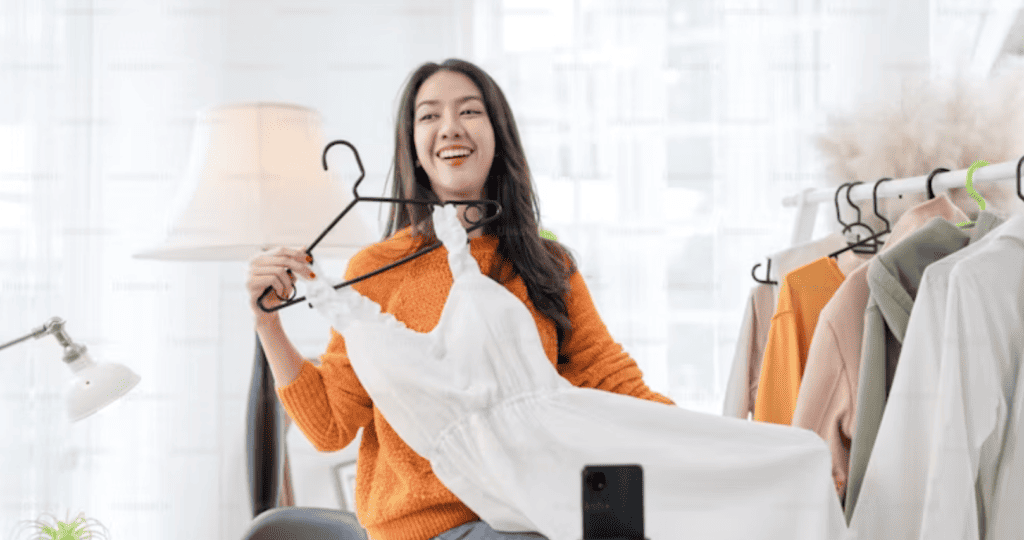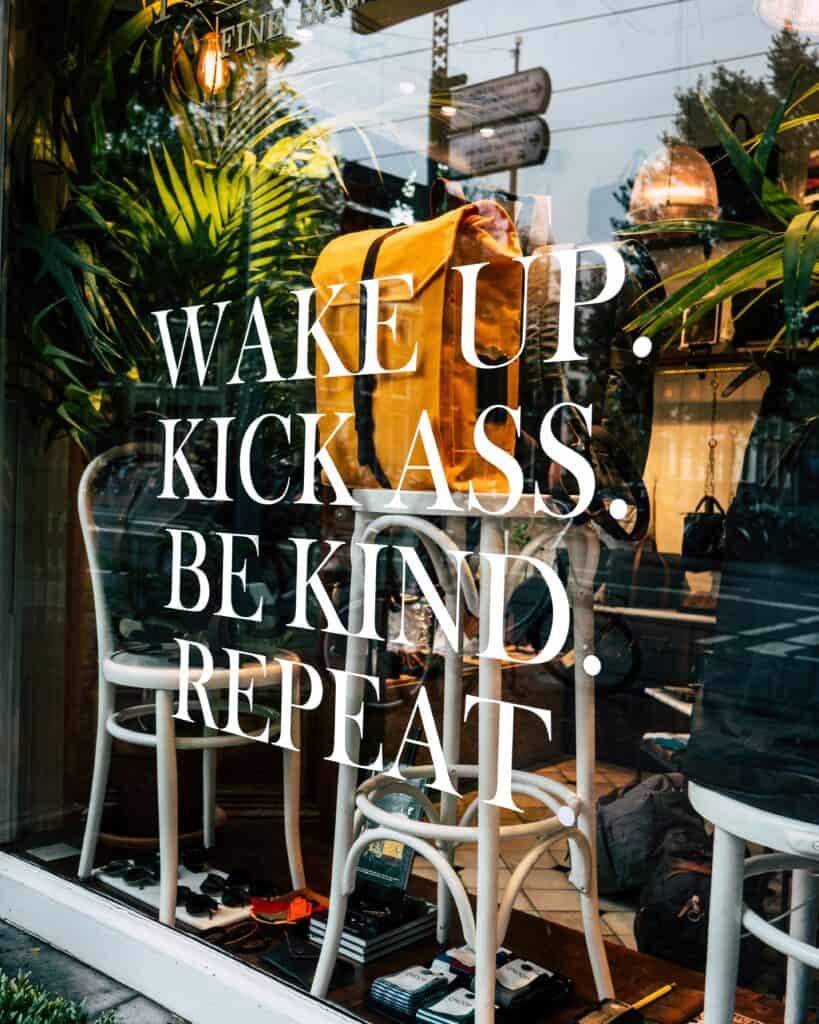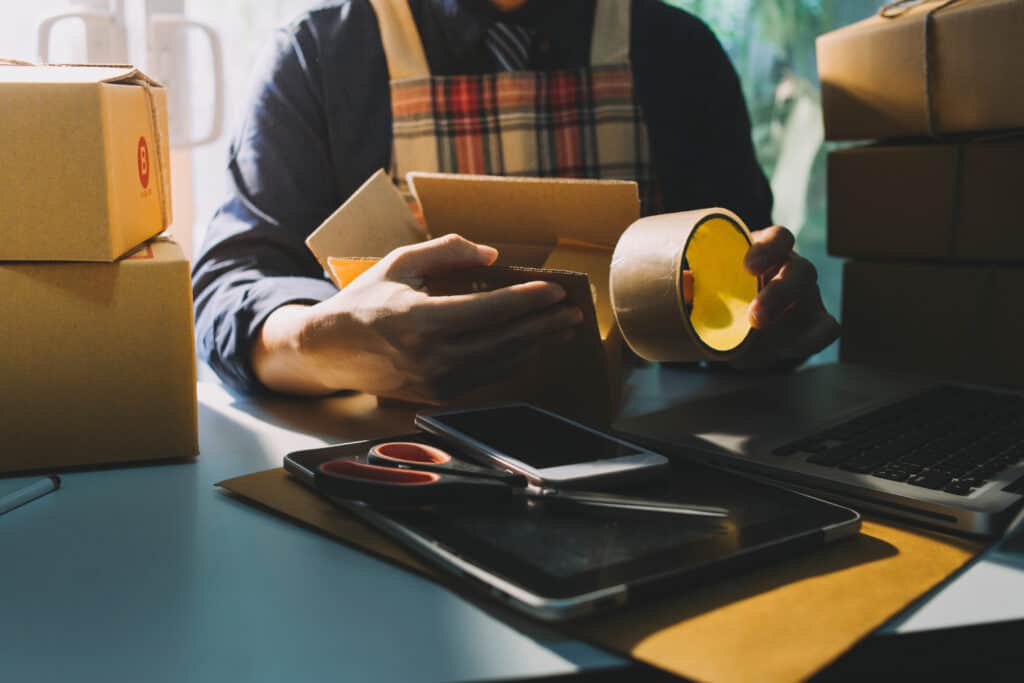I have worked with small business owners for over 10 years and what i can say with confidence is that the biggest problem that most small business owners struggle with is finding sustainable ways to grow their business.
Many small businesses have wonderful products that genuinely solve a problem for their customers but they do not think of providing a holistic solution to a customer from the perspective of helping a customer solve his biggest pain-point.
This is where I see many small business owners not maximising the potential that upselling has to drive sustainable growth and solve a customer’s pain completely. Upselling is an integral part of any small business sales strategy which should not be ignored.
Upselling to the customer at different stages in the sales funnel can also help increase the sales conversion rate for the small business.
What does upselling mean for small businesses?

Basically, upselling is a sales strategy in which a business offers customers an upgraded or additional product from what the customer wanted initially.
It’s a way to increase the business’s earnings without acquiring new customers. For small businesses, this is particularly important because it helps to maximize revenue from the existing customer base
Imagine a small cafe where a customer comes in for a regular coffee and the barista suggests they should try the special coffee of the day. This is a slightly more expensive, but the price difference is not too high to deter the customer (Maybe $1). If the customer agrees, that’s upselling. The coffee shop makes more money from that single transaction.
Upselling is not just about looking to make more money; it’s actually about providing better value to customers and solving their problem completely.
For small businesses, upselling can is often more effective than acquiring new customers. Acquiring new customers can be costly and time-consuming. It’s easier and definitely more profitable to sell to customers who already know and trust your small business. When done in the right spirit, upselling can make customers feel they are getting a better value or their problem gets solved completely, which can encourage repeat business and positive word-of-mouth referrals.
The most important aspect of upselling is the transparency and intent with which the proposal is shared with the customer. The key is to understand the customer’s needs and make suggestions that genuinely add value to their purchase. If customers feel pressured or tricked into buying something they don’t need or want, it could harm the business’s reputation. Upselling is not a means to try and rip-off your customers without them knowing.
For small businesses, upselling is a crucial strategy. A good upselling strategy can increase revenue per sale, enhance customer satisfaction by matching more suitable products or services to their needs, and strengthen customer relationships, all of which are vital for the growth and sustainability of small businesses.
What is the difference between upselling and cross-selling for a small business?

In marketing and sales, both upselling and cross-selling are used interchangeably which can confuse actual business owners. Both can effectively increase sales, but they work in different ways. Cross is different from upselling, it basically enables a small business to boost its revenue by selling additional products or other items in addition to what the customer wanted.
Upselling is when the business encourages a customer to buy a more expensive or upgraded version of the product they’re already interested in. It’s about enhancing the value of a customer’s purchase by offering a higher-quality option. The goal of upselling in sales and marketing is to make customers aware of better options that they might not have considered, thereby increasing the business’s revenue from a single sale.
Cross-selling, on the other hand, involves recommending products that complement or are related to the item the customer is already buying. It’s about expanding the sale by offering additional products. “Would you like fires with that” is a very well known cross-selling term in the market :P. The aim here is to increase the business’s overall sales by selling more products to the same customer.
For small businesses, both upselling and cross-selling are vital sales and marketing techniques. They can help increase the average transaction size, leading to higher overall revenue. Upselling focuses on quality upgrades, while cross-selling expands the range of products sold. In marketing, these strategies not only boost sales but also improve customer satisfaction by offering additional value.
A small business can leverage these tactics by training their staff to recognise opportunities for upselling and cross-selling. This requires a contextual understanding the customers’ needs and preferences, which is crucial in making relevant and beneficial suggestions.
Successful cross-selling in a small business can result in better customer satisfaction leading to repeat customers, increased loyalty, and word-of-mouth marketing, all of which are essential for the growth and sustainability of the business.
How should the upselling strategy fit into overall sales and business strategy for a small business? Tips for small businesses to offer to their teams.

As I noted earlier in the article, an upsell strategy is a critical component of any sales or growth strategy for a small business.
- Upselling strategy should align with the core value of the business – Upselling should align with the business’s core values and product offerings. Primary focus should be on providing value to the customer, not just increasing sales. This means recommending products or services that genuinely enhance the customer’s experience or meet their needs completely.
- Effective upselling needs to be a part of employee training – Staff should have a deep understanding of the business’s products or services and they should be able to identify upselling opportunities. Its crucial that this is done in a way that is natural and helpful, rather than pushy or salesy. This approach not only helps in increasing sales but also builds trust and loyalty among customers.
- Upselling must be integrated into the business’s marketing strategy – Marketing content can highlight the benefits of premium products or services, creating awareness and interest among potential customers. Online platforms, like the business’s website or social media channels, can be used to showcase customer testimonials or case studies that demonstrate the value of upgraded offerings.
- Understanding customer behaviour and preferences is crucial for upselling to be successful – This can be achieved through customer feedback, sales data analysis, and a good understanding of your target audience. By understanding what customers value, a small business can tailor its upselling strategy to meet those needs more effectively.
- Upselling strategy should be an extension of the overall business strategy for a small business – It should aim to enhance the customer experience, align with the business’s values and offerings, involve well-trained and knowledgeable staff, be integrated into the marketing efforts and be informed by a good understanding of customer preferences. This holistic approach not only boosts sales but also fosters long-term customer relationships and business growth.
Should a small business try bundling and marketing unrelated products just for the sake of upselling?

This is the most common form of upselling that i have seen in practice at small businesses. Many business owners randomly bundle products together to create a bundle that does not make sense from a functional fit perspective.
The only response I get is that, they need to get rid of blocked inventory so that are trying to push sales. So the result is what you expect. Customers will see you as only trying to increase sales rather than providing them good value.
I will strongly encourage small business owners to think customer backed and then curate products that are suited for upselling after a careful evaluation of how they can solve a customers problem fully, rather than trying to optimise for short term sales.
These tips will go a long way in building a reputation as a reliable and honest business over the long term which is what drives business growth.
How to put in place sales techniques to upsell a premium version of a product and increase sales for a small business?

There are some best practices and tips I have learnt after observing a few small business owners pull off a successful upsell program over a long period of time. These practices are time tested and can work in every situation no matter which industry the small business is in.
- Understand your Product, your Audience and your Team: First, ensure you have a thorough understanding of the premium product’s features and how they meet the needs of your target audience and how your team can sell this feature to solve a customer’s problem
- Identify Upsell Opportunities using past data: Analyze customer purchase history and preferences to identify opportunities for upselling. Look for patterns where basic models sell more than premium ones and experiment selling there.
- Create a Value Proposition: Develop a clear value proposition that explains why the premium product is worth the extra cost. Highlight the additional benefits and how it can solve problems better. Highlight longevity, better performance, or any exclusive features while selling.
- Personalize the Approach: Personalize your sales approach based on the customer’s previous interactions with your business while selling. Tailoring the conversation to their specific needs or interests can make the upsell more relevant and appealing.
- Offer Demonstrations or Trials: If possible, offer demonstrations or trial periods for the premium product while selling. This allows customers to experience the benefits firsthand, making them more likely to purchase. A comparison with a basic one placed immediately next to it does the trick too.
- Follow-Up After Purchase: After a customer purchases the standard product, follow up with them to provide additional information about the premium version they purchased. This can be done through email marketing, phone calls, or during their next visit
- Monitor and Adapt: Regularly review the performance of your upselling efforts. Use customer feedback and sales data to refine your approach and make adjustments where necessary.
Adopting these practices into the sales techniques always helps a small business eek out additional revenue and growth from their already established sales strayegy.
What are the 5 ways to upsell a product?

I often get asked what are the different ways in which a small business can position an upsell. Business owners are looking for ways in which they can create and sell upsell plans for their businesses. There are broadly 5 ways of selling in which this can be done.
- Offer Premium or Upgraded Versions: When a customer shows interest in a product, introduce them to a premium or upgraded version that offers more features, better quality, or additional benefits. Explain how the upgraded version provides greater value, making sure to tailor your selling pitch to the customer’s specific needs or interests.
- Bundle Products: Create product bundles that include the main item the customer is interested in along with add-on products. This not only upsells additional products but also enhances the customer’s overall experience making the selling process easier.
- Limited-Time Offers: Creating a sense of urgency with limited-time offers on premium products. This could be a special discount, an exclusive bundle, or additional services. Typically, a sales representative lets customers know in advance about an upcoming price increase to create a sense of urgency. The key is to make the offer time-sensitive to encourage a faster decision.
- Offer Customization Options: People often value products that are tailored to their preferences. Offering customization or personalization options for a product can be a compelling upsell and the effort to customize is justified by the premium pricing.
- Implement a Loyalty Program with Exclusive Upgrades: Offering a loyalty or rewards program that incentivizes repeat purchases can be an effective upsell strategy. Under this program, customers earn points or rewards for their purchases, which they can redeem for exclusive products, special upgrades, or premium services
Broadly, a small business that implements maybe even 3 out of the above 5 ways of selling can expect to see reasonable success in their upselling strategies.
Steps involved in an upselling process that a small business must put in place to increase sales
There are broadly 3 steps that a small business must put in place while trying to upsell to customers. These are foundational steps that a small business must address. The whole idea is that you build the context in such a manner so that the customer feels you are providing a genuine suggestion that adds value to the customer rather than make a quick profit.
Building Trust with customers is a pre-cursor to the upselling process
Building trust with customers is fundamental in the upselling process. It creates an environment where recommendations for higher-end products are received positively. When customers trust a business, they believe that suggestions for upgrades or additional purchases are made with their best interests in mind, not just for profit.
This trust is built over time through consistent, honest interactions, understanding customer needs, and providing value that goes beyond making a sale. It’s about trying to establish a relationship where customers feel valued and understood, leading to a sense of openness in conversations and willingness to considering recommended products. Trust turns a transactional encounter into a relational experience, making upselling a natural part of the customer journey rather than a forced sales tactic.
Gaining a deep understanding of customer preferences is the next step in upselling
Understanding customer preferences is the foundation for success in the upselling process. This ensures that the recommendations are relevant and beneficial to the customer. This understanding helps in tailoring upsell offers to individual needs and interests, making them more appealing and less like a generic and pushy sales pitch.
When customers feel that a business understands them and their specific requirements, problems and preferences, they are more likely to see the upsell pitch as a ‘value-added’ suggestion rather than as a sales tactic.
Additionally, aligning upsell options with customer preferences increases the likelihood of purchase, as customers are more inclined to buy products that closely match their needs and solves their problems best. This approach not only boosts sales but also enhances customer satisfaction and loyalty towards your business, as it demonstrates a business’s commitment to providing personalized service.
Recommend what is in the best interest for the customer
Recommending what is best for the customer is the crux of upselling. This approach ensures that any additional products or services suggested truly align with the customer’s needs and interests. When businesses prioritize the customer’s best interest, it cultivates trust and strengthens the customer relationship. Its simply the better way to sell.
Customers are more likely to respond positively to upselling when they feel the business is genuinely looking out for them, rather than just trying to increase sales. This trust can lead to long-term loyalty, repeat business, and positive word-of-mouth.
Ultimately, focusing on what’s best for the customer not only drives sales in the short term but also builds a sustainable and reputable business in the long term.
What are the 4 stages of upselling?
The 4 stages of upselling is in practice similar to a regular sales process. To put some structure to it, the stages can be divided based on the stages of the purchase or decision journey that the customer is in.
- Facilitate the Original Purchase: The first step is to ensure that the client’s initial needs are met with the primary product or service. This stage focuses on satisfying the customer’s current needs and setting a context for future upselling opportunities.
- Introduce the Add-On: Once the original purchase is underway, the next step is to introduce an additional product or service that complements the initial purchase. It’s crucial that the add-on is relevant and adds value, enhancing the original product or service in a meaningful way.
- Explain the Benefits: After introducing the add-on, the third stage involves clearly explaining its benefits. Instead of just listing features, focus on how the add-on brings additional value or solves specific problems for the customer.
- Close the Deal: The final stage is to close the deal. If the benefits of the add-on have been effectively communicated and align with the customer’s needs, this step should be a natural conclusion to the upselling process. It’s also important to tailor the approach based on the client and be prepared to follow up at a later date if the customer is not ready to make an additional purchase immediately.
How should a small business sales agent speak while attempting to upsell? The ideal upselling Spiel.

Lets look at some examples of sales pitches a sales agent can use in each of the stages mentioned above while doing the upsell. The first 3 stages are what sets the conditions for high likelihood of success through upselling for a business. We can look at example conversations for each of the first 3 stages.
What are the things a sales agent can say during an upsell process while facilitating the original sale?
There are some standard spiel examples that a sales agent can use during this initial stage. It can be a simple introduction of the premium version with additional benefits, it could be a personalised recommendation or it could be to introduce a bundle.
“I see you’re interested in our standard model, which is a great choice. Have you considered our premium version? It comes with additional features like [list features], which could really enhance your experience.”
“Based on what you’ve told me about your preferences and usage, I think you would really benefit from our advanced model. It specifically addresses [mention specific needs or issues] that you’re concerned about.”
“If you’re thinking of getting the [original product], I’d recommend looking at our special bundle offer. It includes [list additional products or services] at a significantly reduced price compared to buying them separately.”
How should a sales agent introduce an add-on during an upsell conversation?
A few well crafted conversation starters could be the following sentences
“The camera you’re choosing is fantastic for outdoor photography. A lot of photographers like to pair it with our protective lens filters. These filters not only enhance image quality under various lighting conditions but also protect your lens from scratches and dust. Would you like to add these to your purchase?”
“You’re going with our standard web hosting package, which is a solid choice. However, we also offer a bundle that includes advanced security features and 24/7 technical support. It’s a small additional cost, but it gives you peace of mind and ensures your website runs smoothly. Many of our clients find this bundle to be very beneficial. Shall I include this in your package?”
What are some examples of how a sales agent can explain the benefits during an upsell conversation?
This is where the employee training on your products will really shine through. If your sales agents have an intuitive understanding of the products you want to sell, they will be able to give a very convincing explanation of the benefits.
“The basic package is excellent, but with our advanced package, you get the added benefit of full customization. This means you can tailor the product to meet your specific needs, giving you a more personalized experience. Our clients often find that this level of customization enhances their overall satisfaction with the product.”
“Our premium subscription might seem like a bigger investment now, but it includes additional services that you would otherwise pay extra for in the future. In the long term, this package can actually be more cost-effective, saving you money on future upgrades or add-ons.”
“Our upgraded software version not only offers all the features of the basic package but also includes automated tools that streamline your workflow. This means you can complete tasks more efficiently, saving time and reducing effort. Many of our customers have found that this upgrade significantly boosts their productivity.”
What is an example of upselling that a small business has found success with?

A family-owned restaurant I know is known for its home-style cooking. They found success through upselling by focusing on daily specials and premium menu items. For instance, when customers would order a standard meal, the servers were trained to suggest pairing it with a premium beverage or offering a special dessert of the day, often a homemade recipe that wasn’t on the regular menu.
They also introduced a ‘specials menu’ that changed weekly, featuring dishes made with seasonal and premium ingredients, priced slightly higher than their regular offerings. This approach not only increased their average ticket size and sales per customer but also created an air of exclusivity and novelty, encouraging customers to visit regularly to try the new specials.
The restaurant’s upselling strategy was effective because it was based on enhancing the customer’s dining experience with unique and high-quality options, rather than pushing unnecessary add-ons.
In addition to offering premium versions of standard items, the restaurant also emphasized the quality and source of their ingredients, aligning with growing customer interest in sustainable and locally-sourced food.
